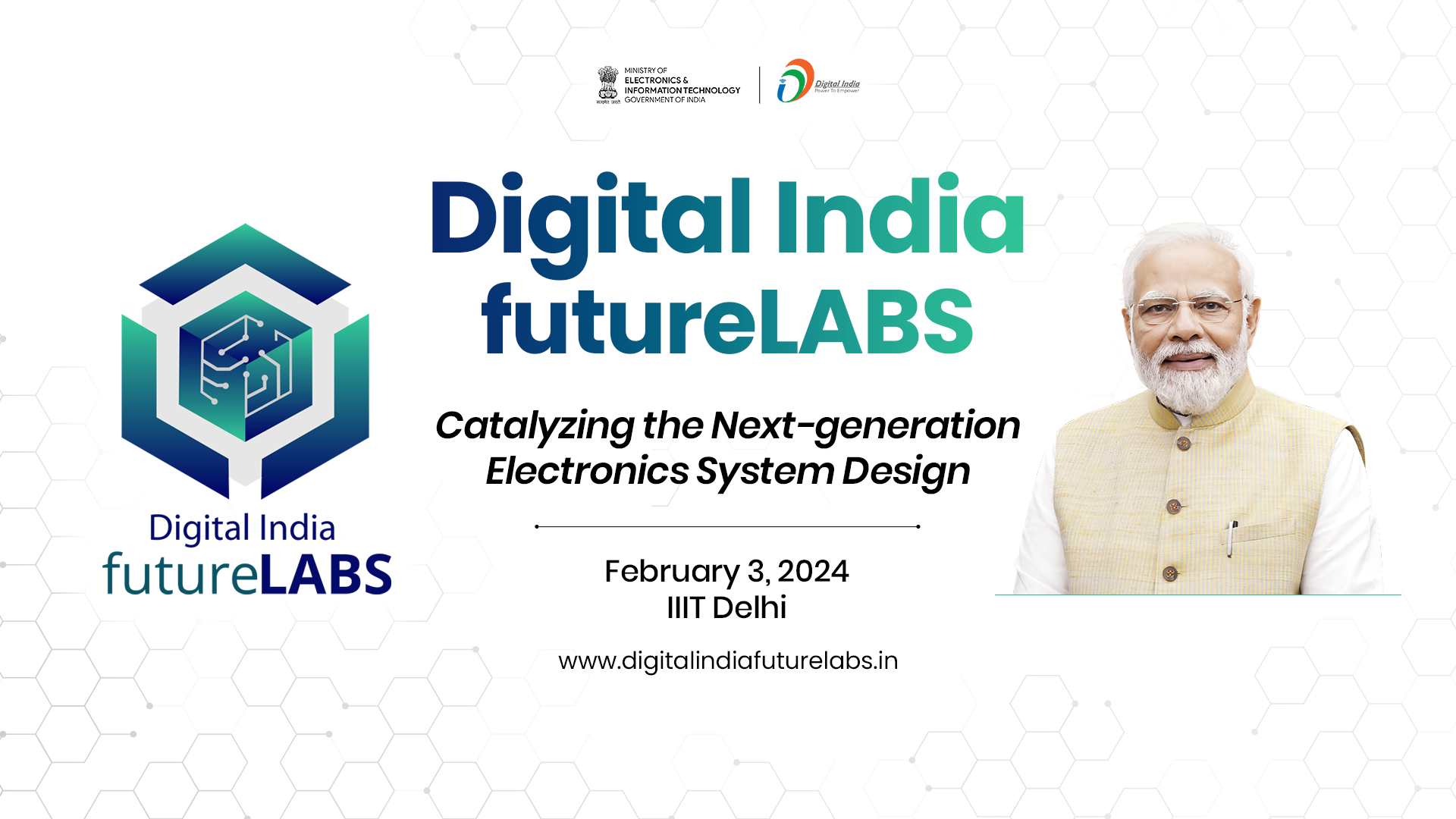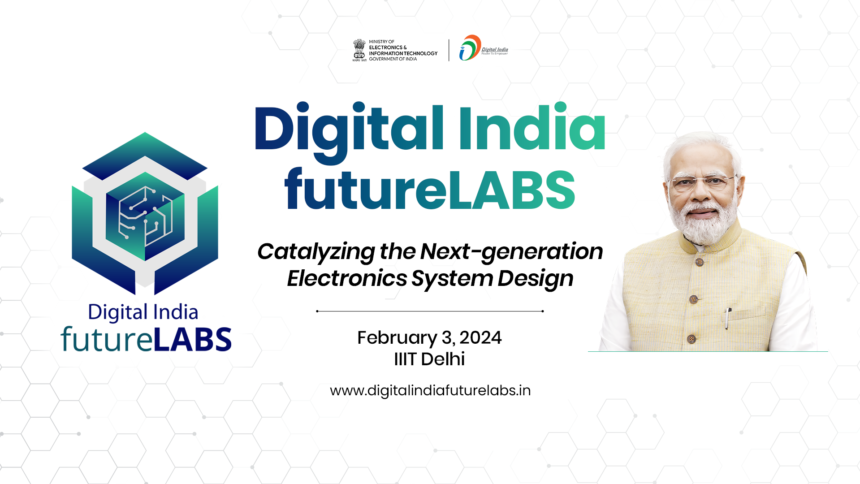‘Digital India futureLABS’ at IIIT-Delhi was recently opened by Rajeev Chandrasekhar, Union Minister of State for Electronics and IT, Skill Development, and Entrepreneurship. This project, led by the Centre for Development of Advanced Computing (C-DAC), lays the groundwork for utilizing the Electronics System Design and Manufacturing (ESDM) industry’s enormous potential in order to pursue a trillion-dollar opportunity.
The goal of the Digital India futureLABS is to advance intellectual properties (IPs), standards, and next-generation electronics system design across several fields by strengthening domestic R&D, elevating the value chain, and fostering a collaborative ecosystem.
Strategic Focus Areas:
The effort is positioned to take use of cutting-edge technologies like artificial intelligence (AI), big data, and quantum computing, signaling a disruptive change. It places a strategic emphasis on computing, communication, automotive & mobility, strategic electronics, and industrial IoT.
Road Map to FY 2027–2028:
Outlining critical activities and focal points for the following four fiscal years, the Digital India futureLABS presents a visionary roadmap stretching to FY 2027–2028 across key technological industries.

The automotive sector stands to gain a great deal from the Digital India futureLABS as it moves toward electric vehicles (EVs), onboard sensors, and autonomous mobility. Research projects in electric vehicle (EV) technology, vehicle-to-grid integration, and advances in urban air and underwater transportation solutions are discussed in the roadmap. Innovations in sensor technologies and renewable energy sources, as well as the creation of connected and autonomous car systems and automotive chipsets, are important projects.
Computing Technology:
The Computing Technology plan includes high-performance computing, quantum computing, local microprocessors, and blockchain technology. It also spearheaded the development of India as a worldwide center for research and innovation in computer-related infrastructure. Initiatives in the works include the implementation of cutting-edge computing systems, local quantum computing facilities, and the creation of native operating systems and blockchain frameworks.
Communication Domain:
To meet the demands of a fully connected society, next-generation wireless networks and IoT solutions are the core emphasis of the communication domain. Research topics include, but are not limited to, RFIC/MMIC technologies, 5G/6G cellular technology, and communication architectures unique to India. The plan calls for the creation of cellular apps and cutting-edge communication technology specific to Indian needs.
A new age of creativity and technology growth is being heralded by the Digital India futureLABS, which has the potential to push India to the forefront of global technological leadership. This effort, which has a thorough roadmap and strategic target areas, demonstrates the government’s dedication to supporting indigenous research, innovation, and technological excellence.



